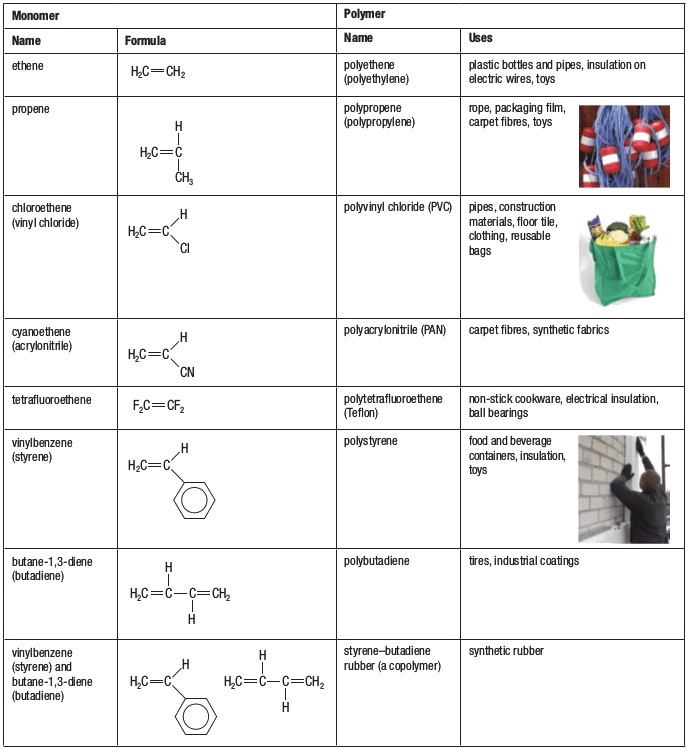Types of plastics
Before we start with the types of plastics, we must understand that when we say “plastic” we are not referring to one specific material. The nature of plastics is very diverse. Plastic is a material that is malleable and flexible at certain temperatures. Plastics are usually characterized by the fact that they are made up of polymers. This term refers to very long chains of molecules linked together to form a stable structure. In the polymerization process, the individual molecules are joined together one after the other to form a chain or mesh by changing some of their physical conditions. Thus, the plastic becomes… plastic.
Diagram of common forms of plastic

But, as we said, these molecules are not always the same. There are all kinds of substances that differ in their properties, their formation process, etc. For all these reasons, plastics have become indispensable substances in our industrial processes, construction, chemistry, and much more.
What was plastic made of historically?
Plastic is a material made up of organic or synthetic compounds that have the property of being malleable and therefore can be molded into solid objects of various shapes. This property gives plastics a wide variety of applications. Its name derives from plasticity, a property of materials, which refers to the ability to deform without breaking.
In 1839 Goodyear in the United States and Hancock in England developed in parallel the vulcanization of rubber. Vulcanization is the hardening of rubber and its increased resistance to cold. The invention of the vulcanization process marks the beginning of the commercial success of thermosetting polymers. The entire plastics industry began with the development of these polymers.
The plastics industry begins with the development of the first thermoset polymers by Baekeland in 1909. Baekeland produces the first synthetic polymer and also develops the plastic molding process, which enabled him to produce various articles of commerce. These early plastics were named Bakelite in honor of their discoverer. Bakelite is formed by a condensation reaction of phenol with formaldehyde. Baekeland’s first synthetic polymer is called bakelite. Learn more about Baekeland’s invention that has changed the world for good and bad
Environmental impacts of plastics
The physical impact of plastic litter on wildlife is evident. It is common to find animals, such as turtles, that have become entangled in nets or ropes, strangling their limbs and suffering from a lack of blood supply.
In addition, many marine species have incorporated plastics into their bodies, including cetaceans, birds, turtles, fish, and plankton. Many die from the ingestion of plastic that has blocked their digestive systems. It is estimated that more than 60% of all seabird species have traces of plastics in their guts and plastics have been found in the stomachs of nearly 700 species of marine vertebrates. However, the chemical impact of plastics is less obvious.
More than 3,000 different chemicals associated with plastics exist, and more than 60 of them are characterized as high health risk substances. Risks of these chemicals includes: environmental persistence, bioaccumulation, and high toxicity. Hundreds of scientific studies show that common plastic additives such as bisphenols, phthalates, flame retardants, and heavy metals are highly hazardous to health.
The challenge with plastics
Faced with a material with so many advantages, the challenge for the industry lies in proper waste management. Although plastic tends to be demonized, contrary to popular belief there are some materials that are considered more sustainable and yet are not.
An example of this can be found in glass, metal, wood, and paper, which require a lot of energy to recycle. In this context, the manufacture and management of plastic waste is considered key to protecting the environment and moving towards a more sustainable future.